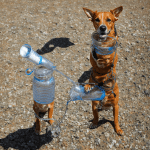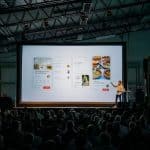In the contemporary digital age, the tools available to artists are in a state of constant evolution. Drones, once perceived as mere playthings or surveillance tools, have recently emerged as significant contributors to artistic expression. With their capacity to capture unparalleled aerial views, create movement, manipulate light, and deliver unique visual experiences, personal drones have become a versatile tool in the hands of creative minds. This evolution marks a significant intersection between technology and art. In the following sections, we will delve deeper into the various ways drones are reshaping artistic expression, spanning the realms of photography, performance art, and more.
Drones and Art Photography
Aerial photography, once the preserve of professionals with helicopters or planes, has been revolutionized by drone technology. Drones offer artists a fresh perspective on the world, enabling them to capture images previously unimaginable.
A voir aussi : How Can Drones Assist in Personal Search and Rescue Operations?
Employing drones, photographers can now capture vast landscapes, towering buildings, and even the intricate patterns of human movement from a bird’s-eye view. This heightened perspective offers new visual narratives and can convey a sense of grandeur and scale often lost in traditional photography.
The ability to manipulate light from such a height and distance adds another layer of artistic possibility. From the warm hues of a setting sun to the contrast of midday shadows, the drone’s ability to play with light opens up a new palette for the photographic artist.
Dans le meme genre : What Are the Latest Innovations in Drone Propulsion Systems?
These drones not only capture static images but also allow for the creation of moving panoramas and sweeping aerial shots. This capability blurs the line between photography and cinematography, and gives artists the ability to create dynamic visual narratives.
Drones and Performance Art
In the realm of performance art, drones are creating innovative forms of spectacle. Combining aerial maneuverability with integrated light technology, drones have become performers in their own right.
One notable example is the work of the Aerial Choreography Movement (ACM), a collective of artists and drone pilots who use drones to create captivating light shows. The drones, programmed to move in precise formations, paint the sky with dazzling patterns of light, creating a visual feast for spectators. Their work epitomizes the fusion of artistic creativity with cutting-edge technology.
These performances are not just about the visual spectacle. The movement of the drones can evoke emotion and tell a story, just like human performers. The choreography of these drones, their rhythm, pace, and pattern, all contribute to the narrative of the performance, offering an entirely new medium for artistic expression.
Drones and Data Art
Beyond the visual and performance arts, drones also contribute to a less conventional art form: data art. This genre uses raw data as the basis for creating artistic representations, and drones can provide a wealth of data for this purpose.
The flight patterns of drones, their speed, altitude, and GPS coordinates can all be recorded and transformed into visual data art. This data, when plotted over time, can create intricate patterns and structures, revealing hidden beauty in the drone’s movement.
For instance, an artist could use the flight data from a drone moving through a cityscape to create a visual map of the drone’s journey. This map could reveal patterns and rhythms in the drone’s movement, translating the drone’s journey into a form of artistic expression.
Drones and Interactive Art
The interactivity of drones also opens avenues for participatory and interactive art. Drones can respond to audience input in real-time, creating an engaging, immersive experience.
In such instances, the audience is not merely a passive observer but becomes an active participant in the artistic process. They could control the drone’s movement, influence its light patterns or alter its filmed imagery. This level of interaction creates a deeply personalized experience, blurring the line between artist and audience.
Such interactive drone art has the potential to transform public spaces, museums, and galleries into dynamic, participatory environments. It also allows artists to experiment with the concept of control and agency in their work, exploring themes such as human-machine interaction and the role of technology in our lives.
The rise of personal drones in the world of art is a testament to the endless possibilities that arise when technology and creativity converge. As artists continue to explore this relatively new medium, we can expect the boundaries of artistic expression to be continuously redefined. This clear intersection of art and technology, characterized by the use of personal drones, is a manifestation of human ingenuity and the continuing evolution of artistic practice.
Drones Transforming Public Spaces
In the vein of interactive art, drones are also revolutionizing the way we perceive and interact with public spaces. These unmanned aerial vehicles offer a unique way of transforming ordinary locations into captivating, dynamic art installations.
Consider for example, the work done by artists in New York, USA, who used drones to coordinate a stunning light show over the city skyline. Using LED lights attached to drones, the artists painted the night sky with vibrant colors, bringing a sense of wonder and excitement to the city’s inhabitants. This spectacle was not just a demonstration of drone technology, but a radical re-imagination of public space.
In Stockholm, Sweden, an artist utilized drones to create an interactive installation in a city park. By allowing visitors to control the drone’s movements and light patterns, the artist transformed the park into a participatory art piece. This allowed visitors, irrespective of their drone piloting experience, to engage directly with the artwork, creating a more intimate and personal connection to the art and space.
Such endeavors underline the potential of drones to convert public spaces into platforms for artistic expression and community engagement. By facilitating a shared experience, drone art in public spaces fosters a sense of community and encourages a more collective approach to art consumption.
The Future Of Drone Art
As we look towards the future, the role that drones play in artistic expression is expected to continue growing. In a world increasingly mediated by screens and digital interfaces, the physicality and immediacy of drones offer a refreshing divergence.
Drone-based art is not merely about the novelty of the technology, but about challenging our understanding of what art can be. It breaks the barrier between the audience and the art, transforming the act of observation into an act of participation. In this way, drone art reflects the broader trends in contemporary art towards interactivity and audience engagement.
Moreover, the rise of drones in the art world also speaks to the converging spheres of art and technology. As drone technology continues to evolve, the possibilities for artistic creation will expand along with it. This opens up exciting avenues for artists to explore, allowing for new forms of artistic expression that were previously unimaginable.
Given the versatility and dynamism of drones, it’s clear that these tools have a lot to offer to the world of art. Whether through aerial drone photography, mesmerizing light shows, data art or interactive installations, drones are shaping the way art is created, experienced, and understood.
In conclusion, the integration of personal drones into the world of art is a clear testament to the boundless possibilities that arise when technological advancements are paired with human creativity. As artists continue to push the boundaries of what is possible with drone technology, we can anticipate a future where drone art becomes an increasingly significant facet of artistic expression. This intersection of art and technology, characterized by the use of drones, is a clear manifestation of human ingenuity and a testament to the evolving nature of art.











